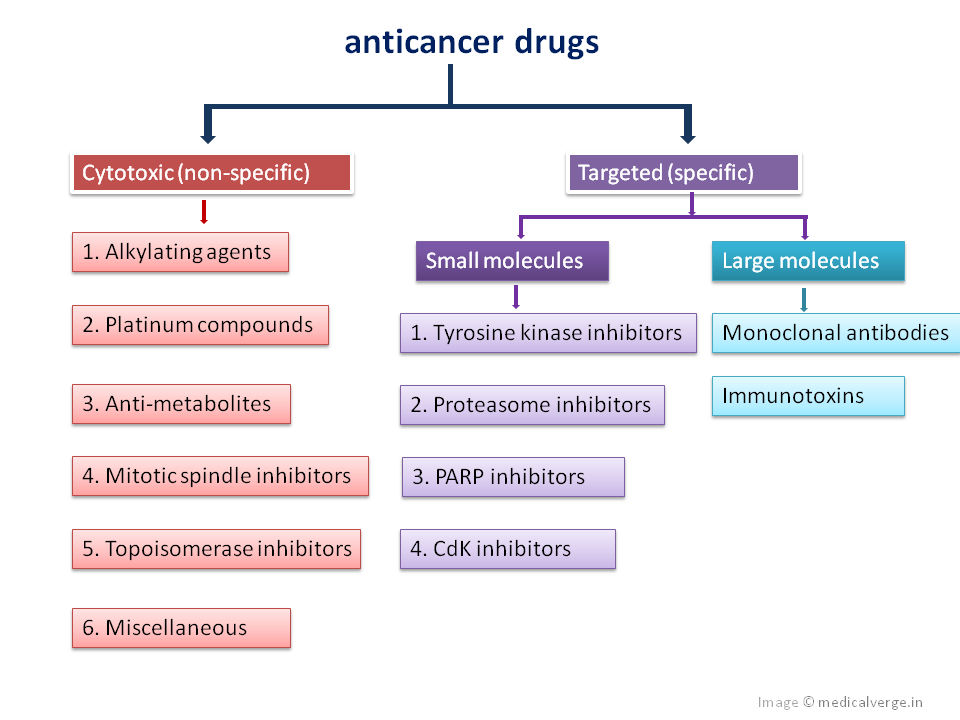Anticancer drugs are divided into two categories: cytotoxic (non-specific) and targeted (specific). Since cytotoxic anticancer drugs are unable to distinguish between cancer cells and naturally rapidly dividing normal cells in the body, they cause side effects such as bone marrow suppression, alopecia, and diarrhea. Alkylating agents, platinum compounds, anti-metabolites, mitotic spindle inhibitors, topoisomerase inhibitors, and miscellaneous category are the subcategories based on their mode of action or chemical nature.
Targeted anticancer drugs bind specifically to cancer cells, resulting in less adverse effects than cytotoxic drugs. Targeted anticancer drugs can be subcategorized into small and large molecules. Large molecules such as monoclonal antibodies and immunotoxins, have high molecular mass, making them difficult to enter solid tumors, with a limited blood supply. This restricts their use, with hematological cancers being the most common indication. In contrast, Small molecules, such as Tyrosine kinase inhibitors, proteasome inhibitors, PARP inhibitors, and CdK inhibitors, penetrate solid tumors better and have less side effects than conventional chemotherapeutic agents.
